The never-fail West System epoxy laminating resin was mixed up, and I laminated four layers of one-ounce glass cloth over the three mast hatches and bridge enclosures.
I did manage to damage some of the engraved work when I pulled the cured GRP blanks off the sail. But, it was all quickly fixed with putty and the finishing scribe, followed by a careful wet sanding. You can see here how the engraved lines of the sail, now relatively high-relief positive lines on the underside of the blank, capture perfectly the outlines of the hatches. I followed those lines as I cut each hatch intermediate master to shape.
After the lay-up atop the sail, and before the epoxy mix changed state, I thickened it with some talc, scrubbed the entire upper hull with a lacquer thinner drenched 3M abrasive pad, and dabbed the goo over all of the model hulls original engravings (except the torpedo tube shutter doors). After the epoxy had cured hard I filed and sanded the work down flush with the surface of the hull. From this point I could re-scribe the hull with a more accurate representation of access hatches, doors, salvage fittings, and the like.


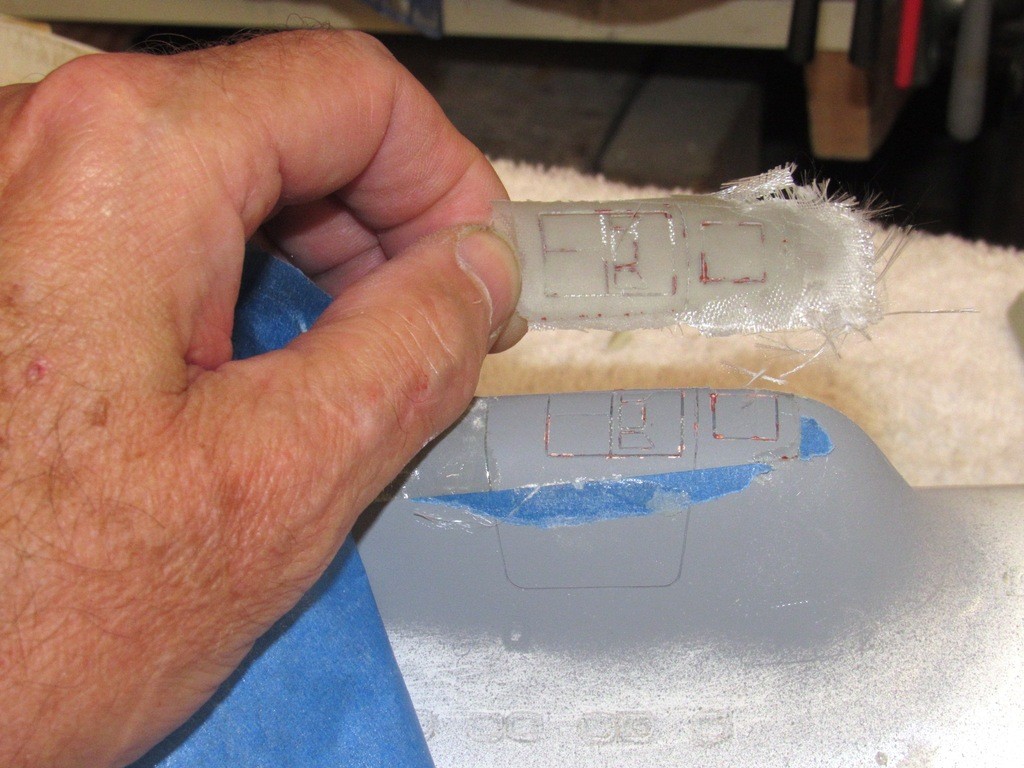
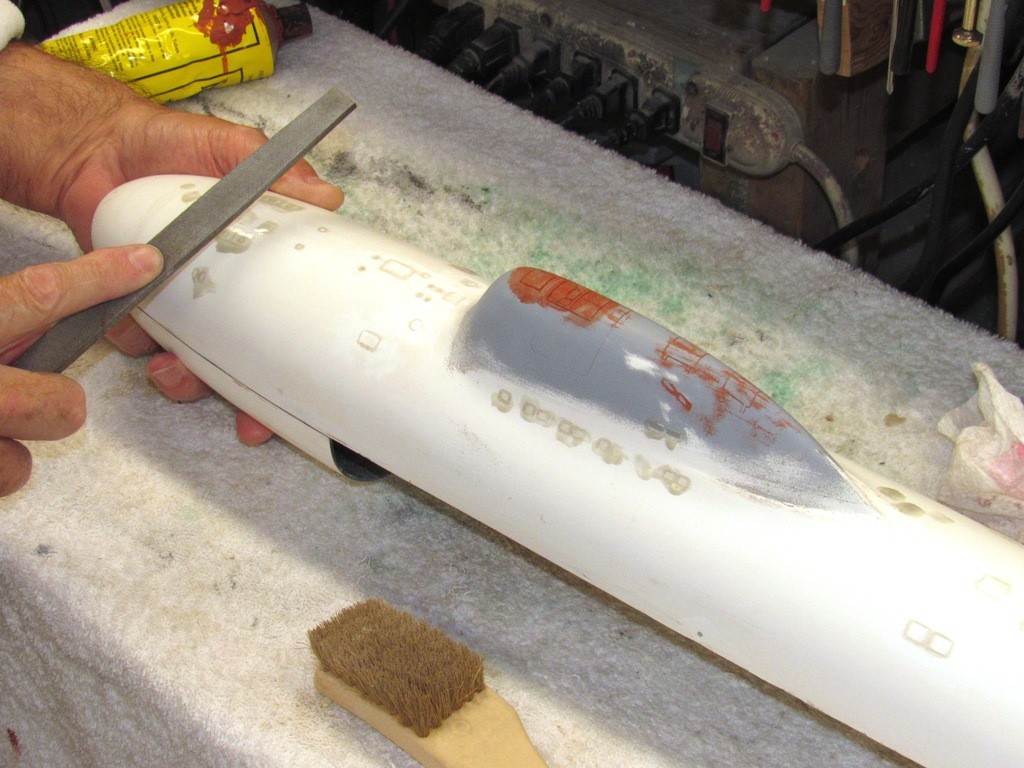


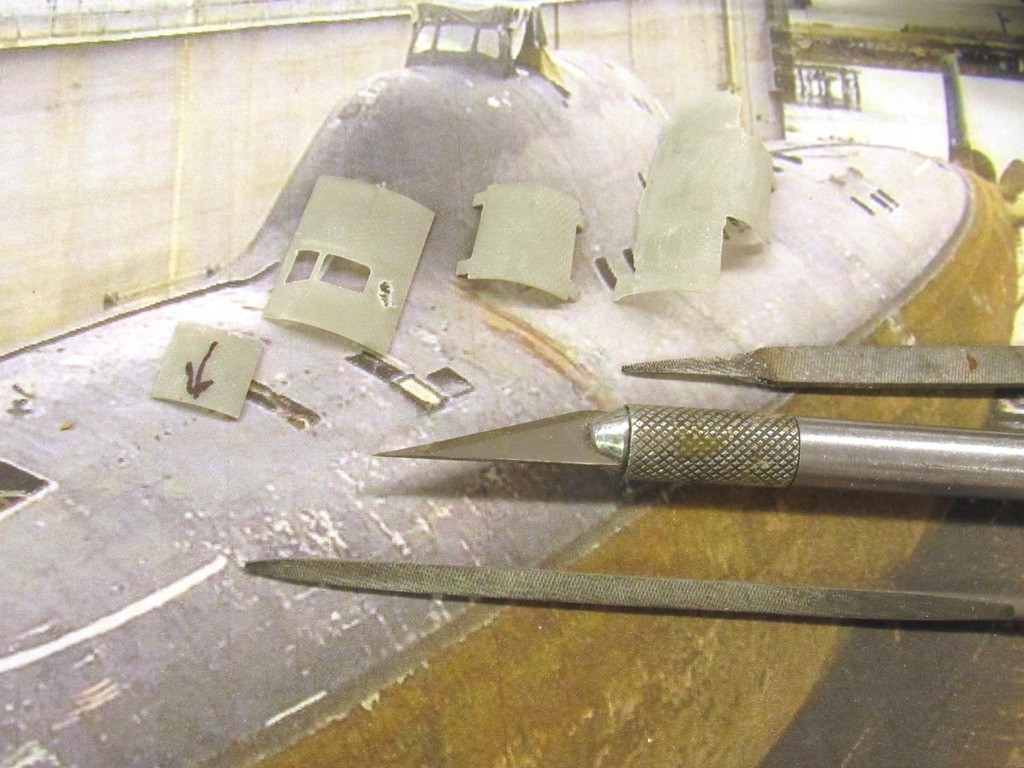
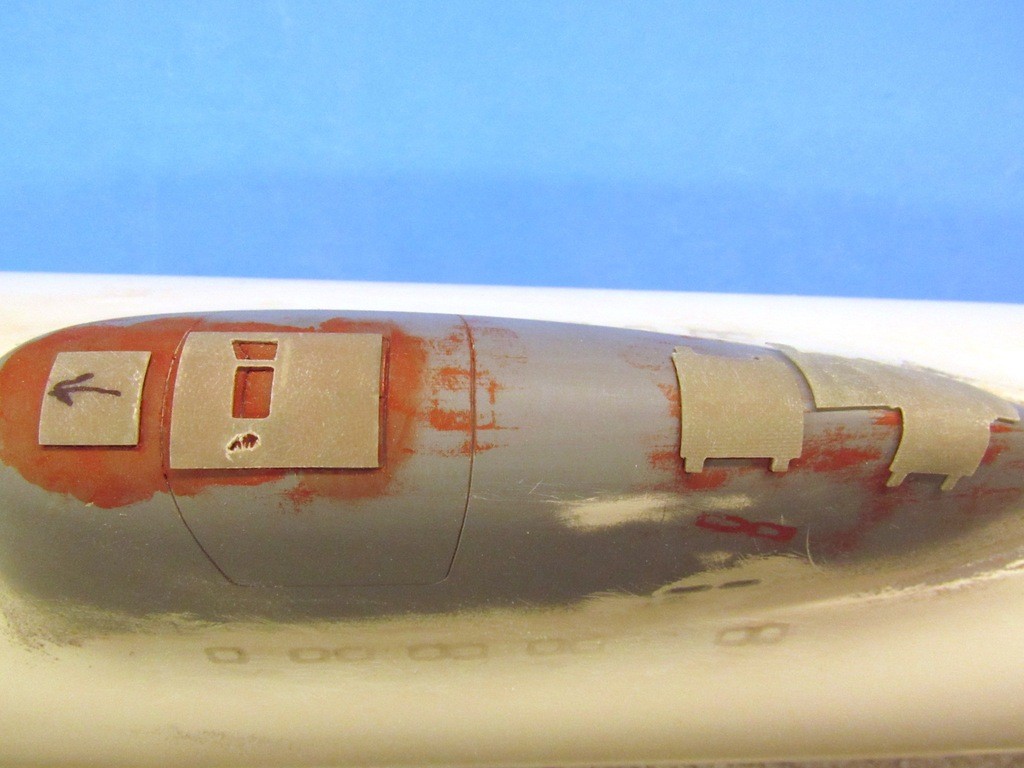
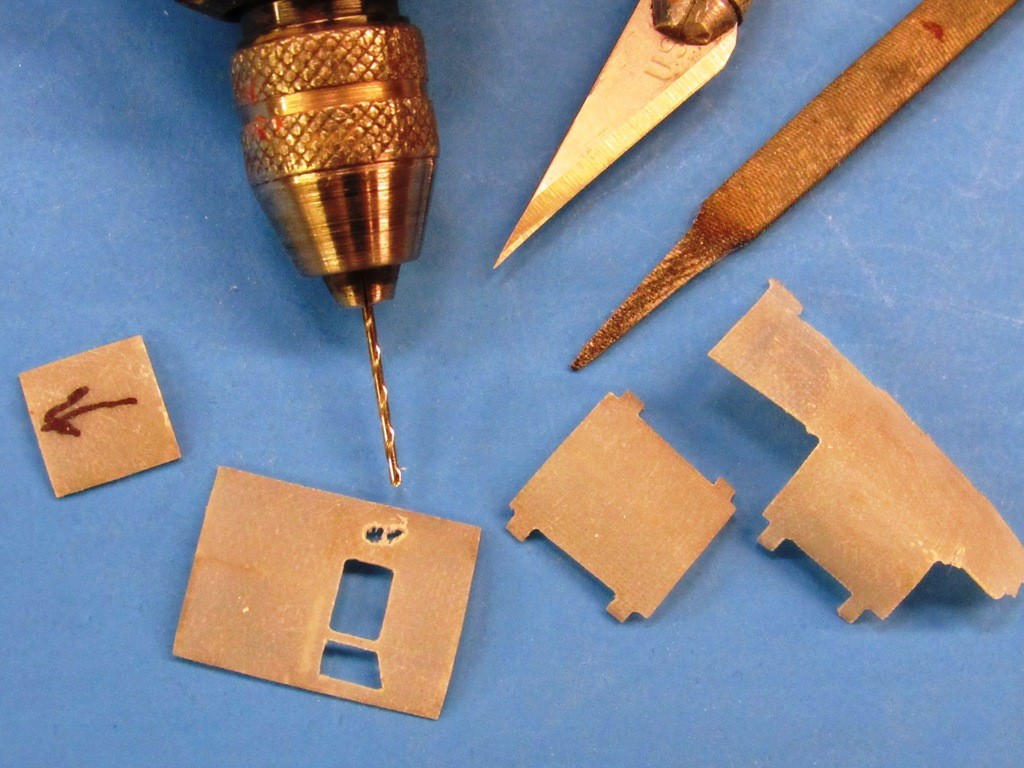
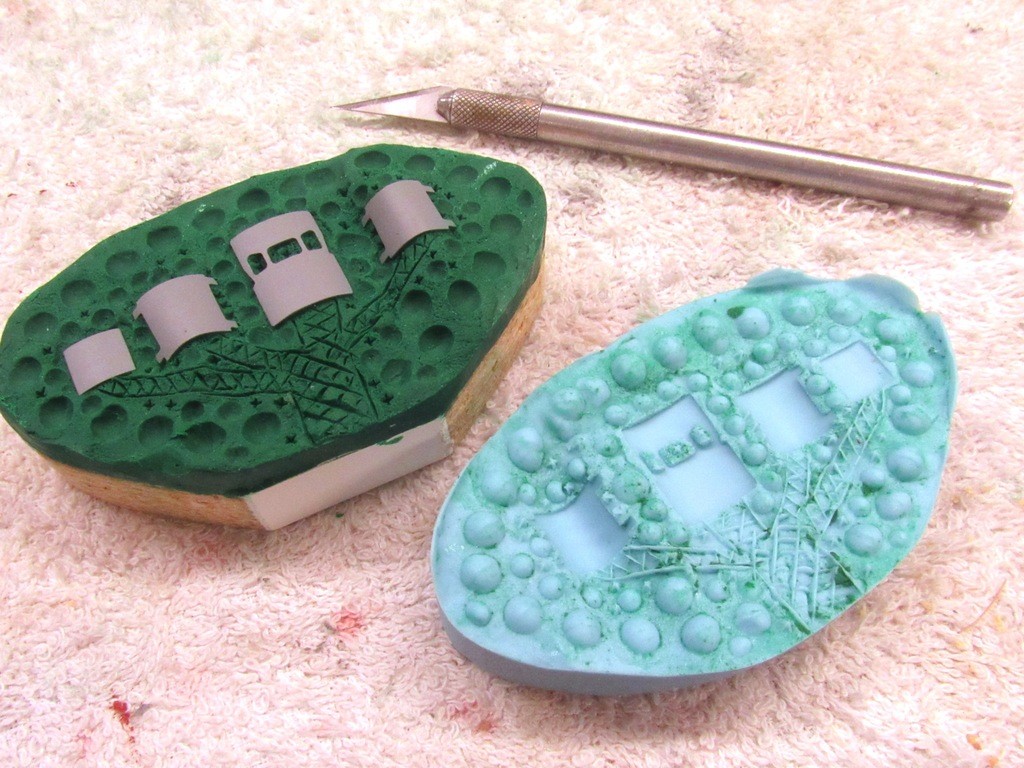
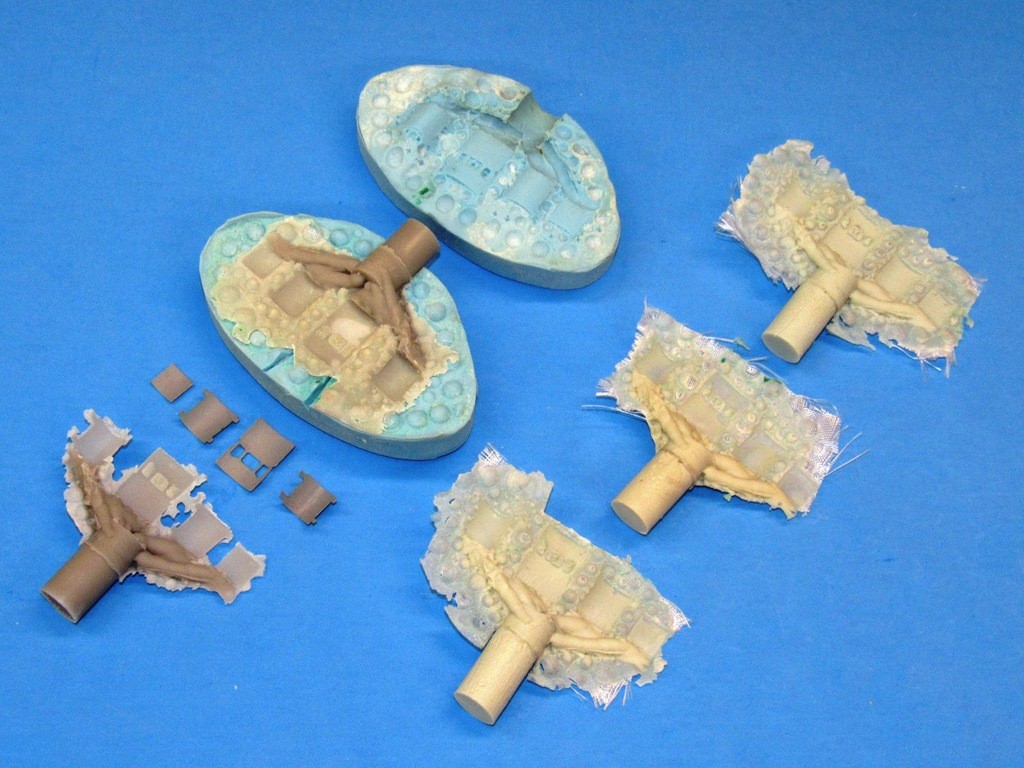
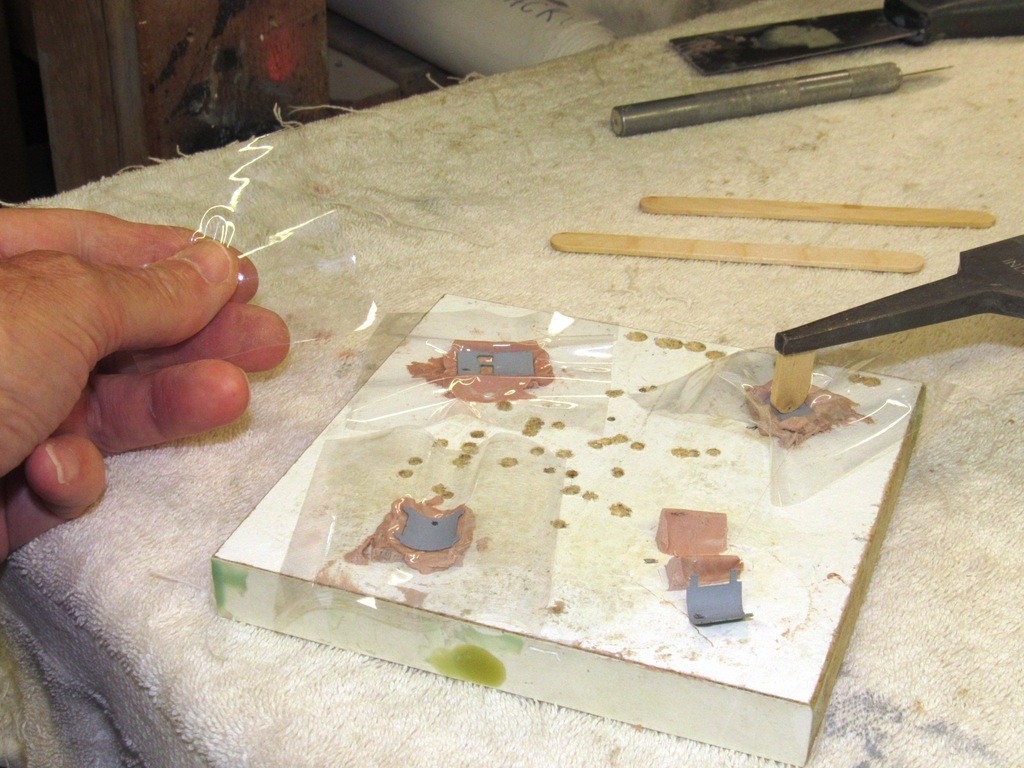

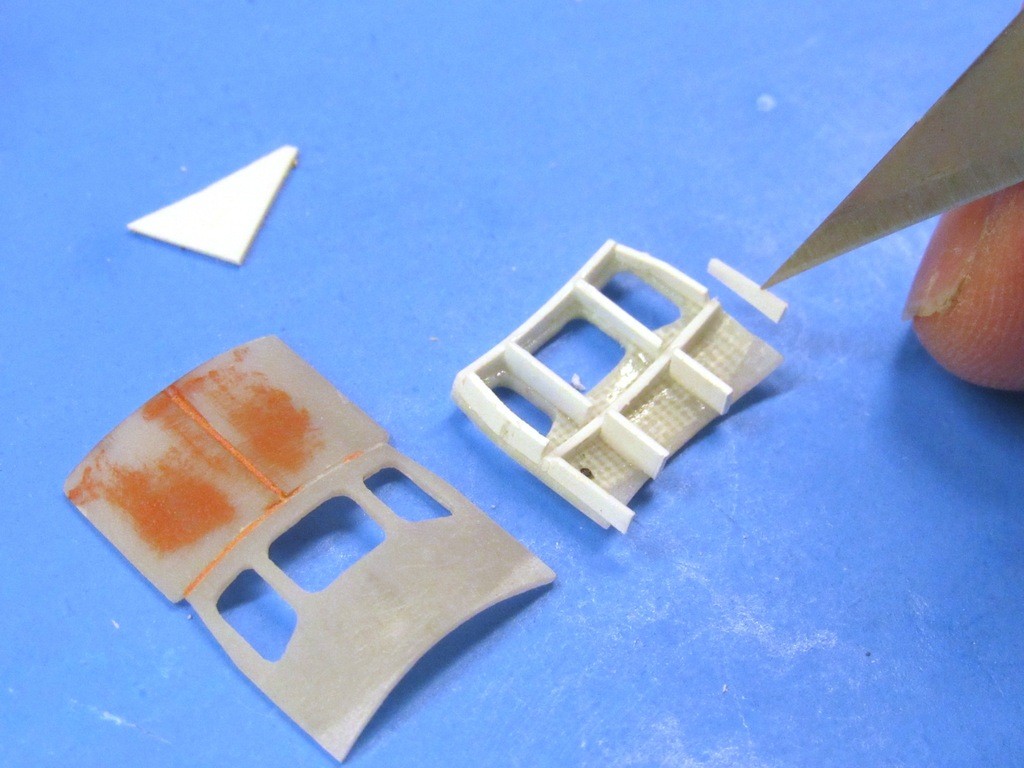
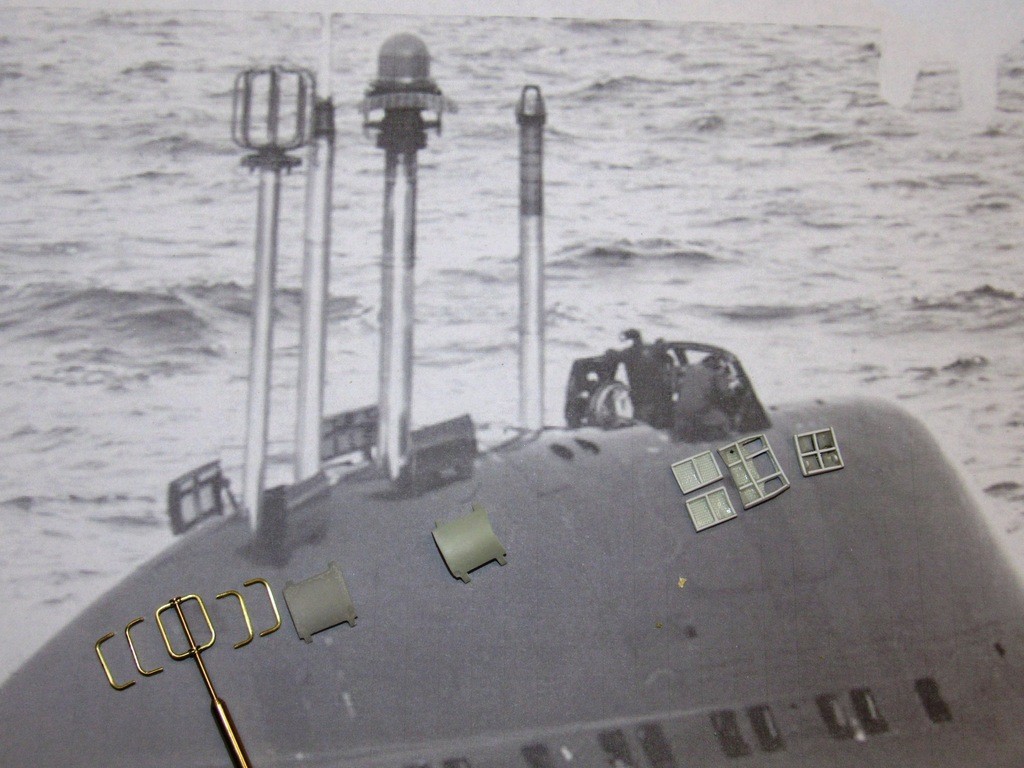
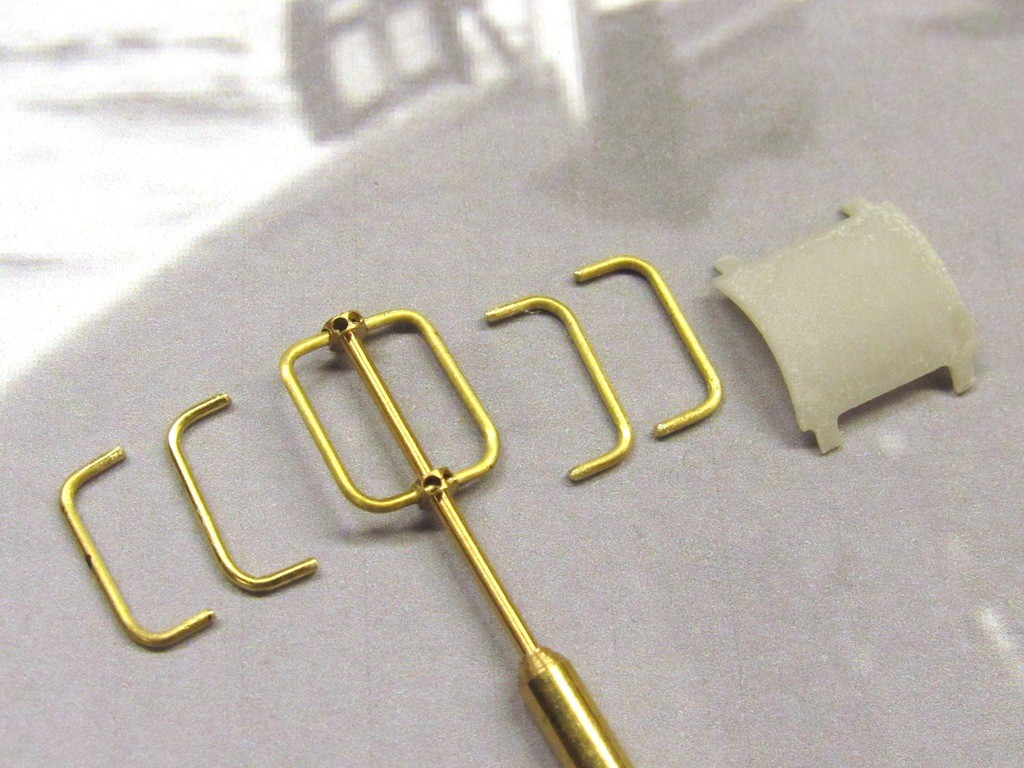

Comment